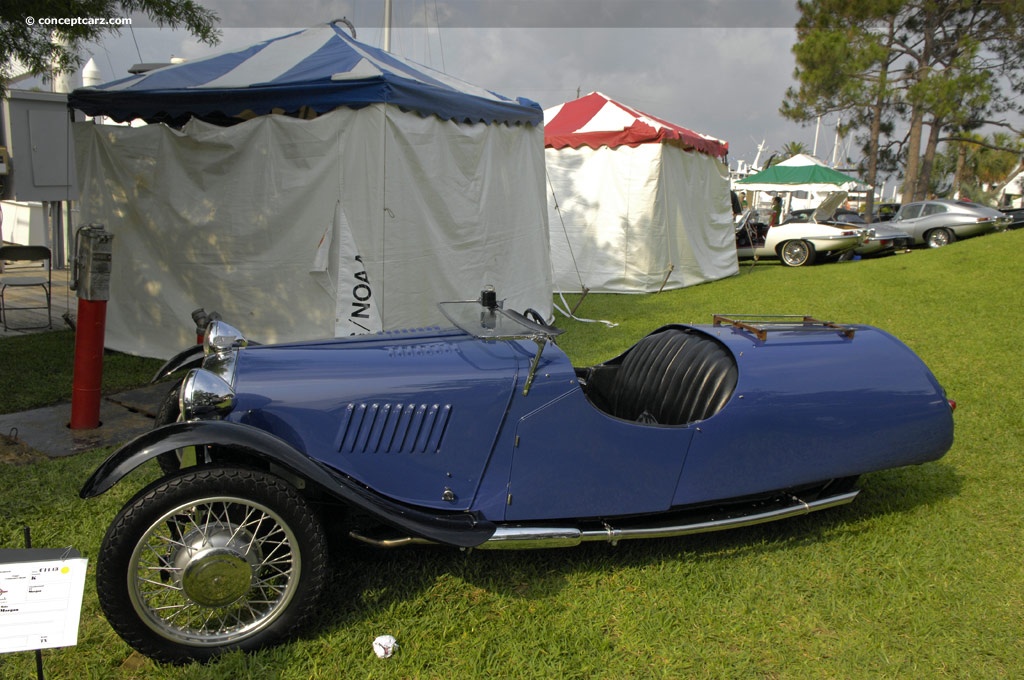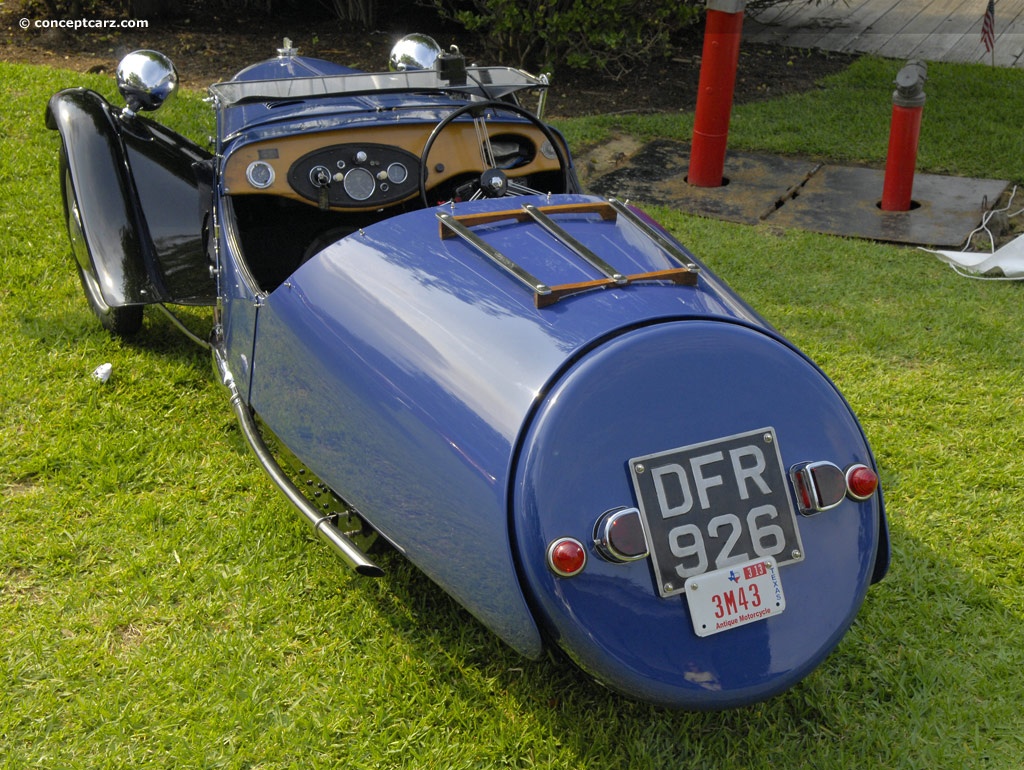Henry Francis Stanley Morgan was the son and grandson of British clergymen but eschewed the family vocation and instead studied at Crystal Palace Engineering College and interned with the Great Western Railway. He opened a garage at Malvern Link, Worcestershire, in 1906 and sold Wolseleys and Darracqs. By 1908, he had constructed an automobile of his own design. It had a tube-frame design with two wheels in the front and a single wheel behind, and powered by a V-twin Peugeot engine. The front-mounted motorcycle engines were paired with a two-speed chain transmission. The novel 'sliding pillar' independent front suspension had steering knuckles that rode up and down on king pins, suspended against coil springs. This unique feature would survive on Morgan cars for over a century.
RoadsterWith financial support from his father, H.F.S. (as he would become known in the automotive sector) organized the Morgan Motor Company in 1909. The first production model was shown at the First International Cycle and Motor Cycle Exhibition at the Olympia Exhibition Center in West Kensington, London, in November 1910. All Morgans were initially two-seaters equipped by a succession of J.A.P., Blumfield, and Precision V-twin engines. The three-wheeled cyclecar offered a superior power-to-weight ratio over traditional four-wheeled automobiles and could outperform many a larger engined four-wheeler. Henry Morgan drove one example in the 1911 London-Exeter-London Reliability, where it earned a Gold Medal, and this was followed by victory in the inaugural cyclecar race at Brooklands the following year with Harry Martin taking the chequered flag three minutes ahead of the field. The success at the track inspired a road-going version in the form of the Grand Prix model, introduced for 1914. The first Aero sports model, inspired by the Grand Prix, followed immediately after World War I.Front brakes were added in 1923, the year total Morgan production surpassed 40,000. In 1925, a model with a modest rear seat was added to the lineup. A new chassis design was introduced in the Autumn of 1931, along with a three-speed gearbox, this time with reverse. More updates and changes followed in November 1933, with the addition of a four-cylinder Morgan. The 933 cubic centimeter Ford engine produced eight horsepower and was installed in a new Z-section frame supplied by Rubergy-Owen Ltd., and paired with a Ford three-speed-with-reverse gearbox. Designated as model F (F for Ford), it would remain in production even as a four-wheeled Morgan was introduced in 1935.
RoadsterProduction of V-twin Morgans ceased at the onset of World War II, but the F Model remained in production (albeit halted during WWII) until 1952. The F Model was built in two- and four-seat configurations, and from 1937, an F-Super with cycle fenders and a 1,172-cubic centimeter engine rated at ten horsepower (30 brake horsepower) was offered. A total of 129 examples of the F-Super were built after World War II.
by Daniel Vaughan | Sep 2023

Roadster

Roadster
by Daniel Vaughan | Sep 2023
Related Reading : Morgan F-Series History
H.F.S. Morgan created a three-wheeled runabout with seating for one in 1909. Morgan created the vehicle for his own personal use and to meet his needs. Interest in the little vehicle soon spread and requests were made to produce more examples. After patenting his designs, production commenced. The early examples were mostly powered by a single-cylinder engine a twin-cylinder version soon followed.....
Continue Reading >>
Continue Reading >>
Similar Automakers
Similarly Sized Vehicles
from 1949
1949 Morgan F Super Vehicle Profiles
Recent Vehicle Additions
Performance and Specification Comparison
F-Series Specification Comparison by Year
Year
Production
Wheelbase
Engine
Prices














